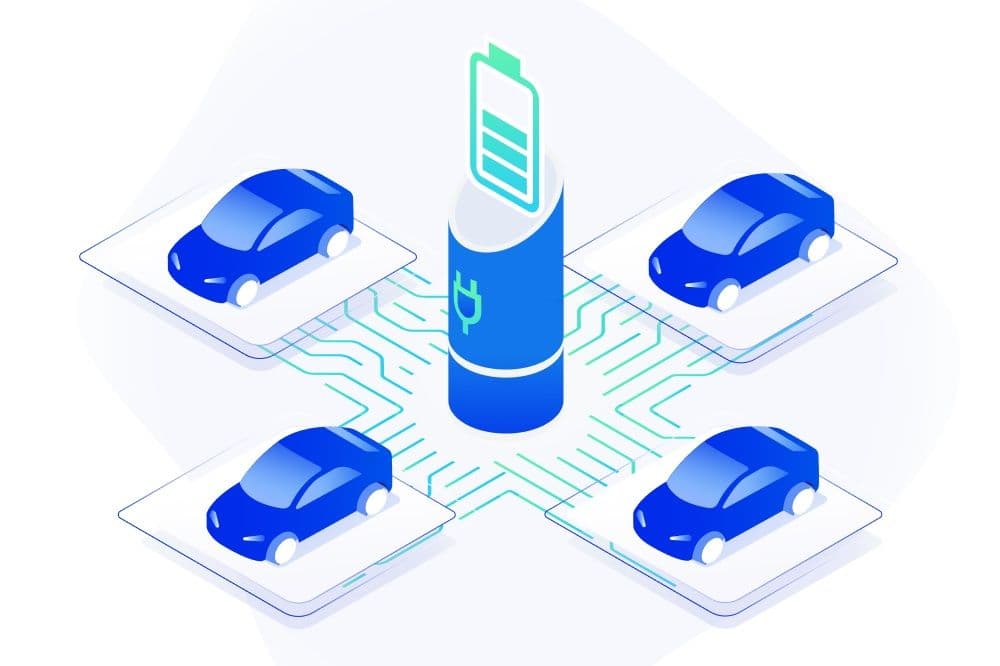The e-mobility market is booming but still enigmatic in terms of processes between market participants or taken roles and available standards. In general, we can distinguish two sides of the charging ecosystem - being on the user-side eMobility Service Providers and Charge Point Operators providing devices and software to manage the infrastructure. In this piece, we address the part of the market responsible for deploying and managing charging points (also called charging stations).
What is a Charge Point Operator (CPO)?
Charge Point Operator or Charging Station Operator is responsible for providing, managing, and setting the charging infrastructure for the e-mobility industry. A CPO business operates a network of charging points - the hardware devices and future-oriented software. The value lies in connecting smart charging equipment with eMobility Service Providers. A CPO assures the network works seamlessly. This includes diagnostics, maintenance, price setting, and Point of interest (POI) data management.
What should CPO care about?
On the operators' side is to provide available, steady, and 24/7 functioning EV chargers. Managing systems need to real-time report any malfunction that occurs with the device. And if possible, automatically fix it.
The matter of real-time also applies to software platforms. Necessary information delivery for adequate decision-making will help to shape operations, business, and technical statistics analysis. Even when the service does not assume the large scale, automation is the core in reducing the Total Cost of Ownership (TCO). Automated processes should hassle-freely handle transactional and technical concerns without engaging employees.
Charging Stations require sufficient energy supply and distribution. Smart management during peak hours, involving renewables and storing battery power, reduces capital and operating costs. Identifying areas for cost optimization and investigating user’s expectations will help balance business processes. This market will continue to grow, for now, with a focus on segmentation, preferences, and habits, the hidden (greener) Holy Grail is possibly up to grasp.
How does the Charge Point Operator platform work?
First, we need to explain that an Operator’s role range may vary. In some cases, CPO owns the infrastructure, provides connectivity, and can supply only one side of the ecosystem. Some of the CPOs act like eMobility Service Providers . Since it’s a mutual interest, they offer other eMSPs access to the charging infrastructure.
To explain the charging ecosystem’s general flow, let’s place CPO as a separate service - hardware and software provider. In this scenario, CPO exposes access to the charging network and relies on eMSPs.
Starting with the basic approach - connecting via custom API
CPO exposes charging network with tailored API. In this scenario, each new linking with a partner follows the provided documentation and matches eMSPs API. This approach is time-consuming and limiting in terms of fast integration and scaling. Via custom API, we link two models and two teams working separately. The matter lies in the charging options provided, and the service eMSP wants to offer. The integration via custom API takes months. Assuming that each operator offers only integration via its API, connecting with each requires substantial resources and time.
However, there are two faster ways to connect and open the charging network.
Applying Open Standards
Open Standards follow the general principle in the e-mobility world, providing an open and accessible network to EV drivers. Charge Point Operator can expose charging network to any eMSP in a standardized way, enabling faster integration and scaling. With Open Charge Point Interface (OCPI), managed by EVRoaming Foundation , the linking between partners can be done within several days. Open Standards, besides, provide transparent information to consumers about charging locations and prices. Moreover, they are developed and updated by a strong community following technical innovations and market requirements . Also, as a part of the ultimate goal, Open Standards are free to use. By simplifying, standardizing, and harmonizing charging networks, standards are an integral part of rapid e-mobility growth.
Hub integration
With one contract owned Charging Stations become exposed to thousands of new users and eMobility Service Providers. Thanks to the Open Intercharge Protocol (OICP), integration with a hub like GIREVE or Hubject opens the broadest spectrum of possibilities. E-roaming networks are the desired state of EV charging cross-border arrangement.
Being integrated with a hub does not limit the other possibilities. Charge Point Operator’s platform can be exposed at the same time to the hub, and eMobility Service Provider via the most commonly applied (and supported) OCPI standard.
What are the Charge Point Operator platform’s features?
At the most basic level, every Charge Point Operator platform should provide via admin panel pricing, reporting and billing solution, remote charging stations management, and smart energy management.
The comprehensive backend system allows CPO to define the price for the charging session. Rates can be modeled and verified at the admin panel. The charging session’s price can be specified on the total charged kilowatt-hours, the duration, or a blend of other circumstances (additional parking fee, time & day of the week). The B2B contract between CPO and eMSP includes all tariffs and is invoiced at the end of the billing period. The price that is exposed to the final user (EV owner) depends on the individual eMSP price management system.
Charging sessions management, CPOs should easily handle all station-related administration and control tasks. The admin panel should provide a view of the billing history, modify charging prices, remote management of chargers, and with advanced automation resolve common issues.
Smart energy maintenance allows to reduce the risks of the station and network overload, ensure EVs are charged securely and economically optimized. The highest charging switch can be limited from the admin panel. For example, developing a feature for dynamic load management (DLM) allows setting maximum capacity for several charging points and diffuses the load within the single one.
How can Charge Point Operators optimize their business?
Focus on operational advantage, staying up-to-date with the most recent protocols’ releases, smart energy administration, monitoring, and analyzing will provide excellent scalability and interoperability. The reliable charging infrastructure management system, easy to maintain and open for eMSPs boosts network scaling and ROI. In turn, an e-roaming platform exposes charge points in the fastest and most efficient way. Fortunately, one approach does not eliminate the possibility of benefiting from the other. However, responsibility for the maintenance of charging points remains on the CPO's side. Automation and the ability to make quick, ideally remote fixes, responsiveness will have a significant role in the prosperity of one's performance.
Custom CPO platform or off-the-shelf?
Direct and indirect recipients of CPO services depend on the availability of the entire operational infrastructure. This includes real-time hardware monitoring to identify and fix malfunctions before the beneficiary - or even the CPO - is aware of them. Automated maintenance reduces costs of in-field technical repairs.
It’s good to make sure the CPO platform offers smart energy management control. The entire energy flow across the EV charging system secures energy that is delivered at the right time to the right stock at the lowest cost.
The ability to scale is critical to keep up with the booming growth of the EV market. It’s not just about placing devices in an accessible locality but also about providing back-end infrastructure ready to connect with new partners and render the service.
For long-term operations, interoperability will be essential. On the CPO side lies the responsibility for delivering the broadest charger support , allowing easy integration of any charger. Compatibility with protocols and standards like OCPP, OCPI, OICP secures smooth backend operations’ communications.
When considering investing in Charging Infrastructure, the above issues are worth verifying whether the available solutions on the market meet our expectations. Depending on the scale of the planned activity, our needs will differ.
How to efficiently manage interoperability?
Charge Point Operators are the foundation of the eMobility growth. Analyzing and improving EV charging operations leads to better decision-making. In consequence, it maximizes business profits and eliminates unnecessary costs ensuring the best EV charging experience. Regarding investments, this varies based on which market we plan to operate in. Both governmental plans and local units support the development of charging networks. Thus it is worth spending time and finding out what are the possibilities and criteria for obtaining subsidies. The shape of the budget may be subject to modification, and new approaches may arise.
Solidstudio CPO platform - our offer
With the advantage of having e-mobility experts, at Solidstudio we took on board the daring challenge of developing a CPO platform on our own. Knowing the industry's nuances, we made sure that the product we developed would suit a whole plethora of needs that various clients may search for. Thus, our CPO platform can be installed either in any client’s infrastructure or as supported by Solidstudio.
Our platform comes with various necessary functionalities that concur to an effortless charging stations management. The core features consist of:
- OCPI
- OCPP 1.6 and 2.0.1
- Charge Point Management
- remote start/stop
- RFID based charging
- User Management
There are more functionalities planned, they will be gradually announced.
Our Charge Point Operator Platform is fully customizable, ready to be designed as per client’s requests. Supplementary features (which are not within the license, such as the new standards implementation) can be available to purchase as an add-on or upgrade.

